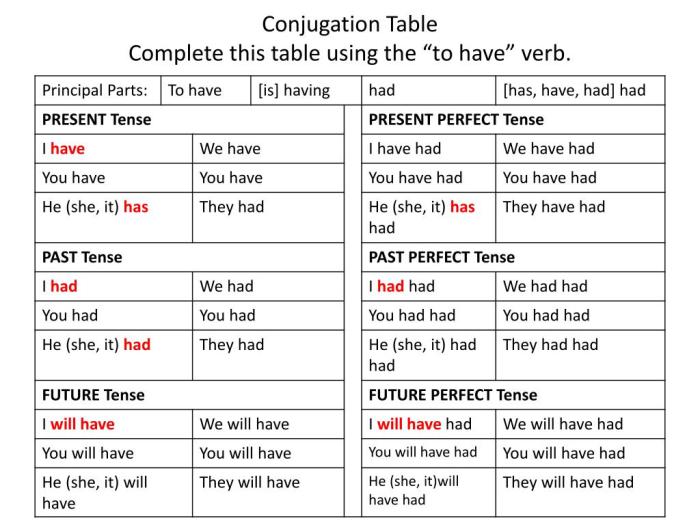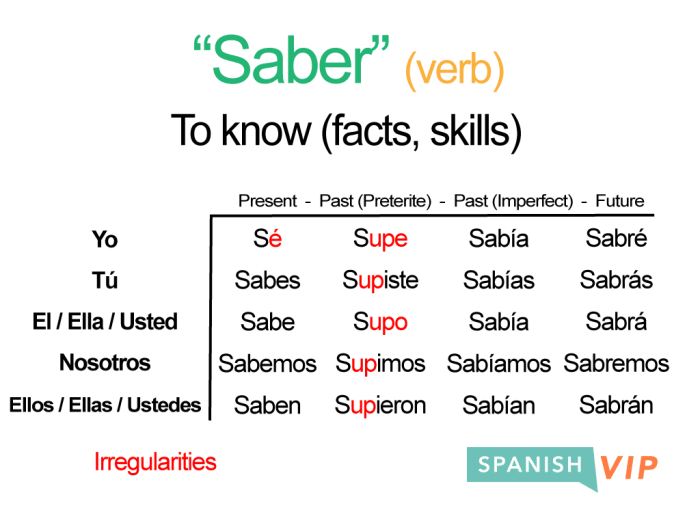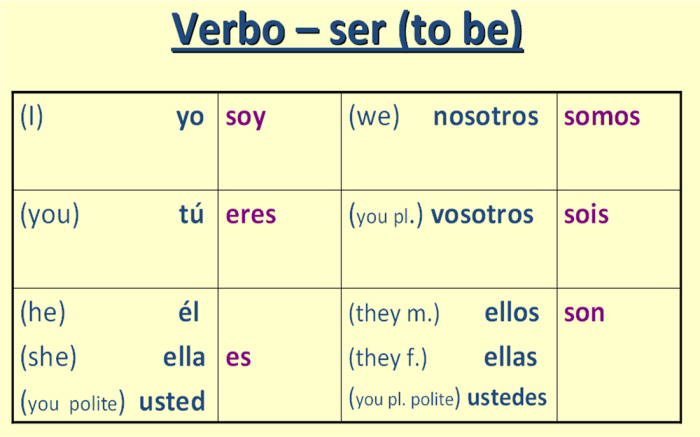Conjugar complete the chart with the appropriate verb forms. – In the realm of language, verb conjugation stands as a cornerstone, shaping the very fabric of communication. This comprehensive guide delves into the intricacies of verb conjugation, empowering learners to master the art of transforming verbs to convey diverse meanings and grammatical contexts.
As we embark on this linguistic journey, we will explore the concept of verb conjugation, unravel the mysteries of different verb tenses, and provide a practical framework for completing conjugation charts with precision. Through a blend of theoretical insights and practical exercises, this guide will equip you with the knowledge and skills to navigate the complexities of verb conjugation with confidence.
Verb Conjugation Overview: Conjugar Complete The Chart With The Appropriate Verb Forms.

Verb conjugation is the process of changing the form of a verb to indicate its tense, mood, person, and number. This allows us to express the time, manner, and context of an action or event.
There are three main types of verb tenses: present, past, and future. Each tense has its own set of rules for conjugating verbs.
Here are some examples of conjugated verbs in various tenses:
- Present tense: I walk, you walk, he/she/it walks
- Past tense: I walked, you walked, he/she/it walked
- Future tense: I will walk, you will walk, he/she/it will walk
Conjugation Chart Structure
A conjugation chart is a table that shows the different forms of a verb in all its tenses and moods. The chart is typically organized into columns, with each column representing a different tense or mood.
Here is a sample conjugation chart with columns for the present tense, past tense, and future tense:
| Tense | Singular | Plural |
|---|---|---|
| Present | walk | walk |
| Past | walked | walked |
| Future | will walk | will walk |
Verb Conjugation Rules, Conjugar complete the chart with the appropriate verb forms.
There are general rules for conjugating regular and irregular verbs. Regular verbs follow a set pattern of conjugation, while irregular verbs have unique forms for each tense and mood.
Here are some general rules for conjugating regular verbs:
- To form the present tense, add -s to the verb for third person singular subjects (he/she/it).
- To form the past tense, add -ed to the verb.
- To form the future tense, use the auxiliary verb will followed by the base form of the verb.
Here are some exceptions to the general rules for conjugating verbs:
- Some verbs ending in -y change the -y to -i before adding -ed (e.g., cry → cried).
- Some verbs ending in -ie change the -ie to -y before adding -ing (e.g., lie → lying).
Conjugation Practice
Here are some exercises for practicing verb conjugation:
- Conjugate the verb “walk” in the present, past, and future tenses.
- Conjugate the verb “cry” in the present, past, and future tenses.
- Conjugate the verb “lie” in the present, past, and future tenses.
Answer keys or solutions for these exercises can be found at the end of this article.
Advanced Conjugation Techniques
In addition to the basic rules of verb conjugation, there are also advanced techniques that can be used to conjugate verbs in complex sentences.
One advanced technique is the use of modal verbs. Modal verbs are used to express possibility, necessity, or permission. They are followed by the base form of the main verb.
Another advanced technique is the use of auxiliary verbs. Auxiliary verbs are used to help the main verb express tense, mood, or voice. The most common auxiliary verbs are have, has, had, do, does, and did.
Finally, verb phrases are groups of words that function as a single verb. Verb phrases can include a main verb, an auxiliary verb, and/or a modal verb.
Expert Answers
What is verb conjugation?
Verb conjugation is the process of changing the form of a verb to indicate its tense, mood, voice, person, and number.
What are the different types of verb tenses?
The main verb tenses are present, past, and future. Each tense has several sub-tenses, such as present continuous, past perfect, and future perfect.
How do I complete a conjugation chart?
To complete a conjugation chart, simply fill in the appropriate verb forms for each tense and person.


